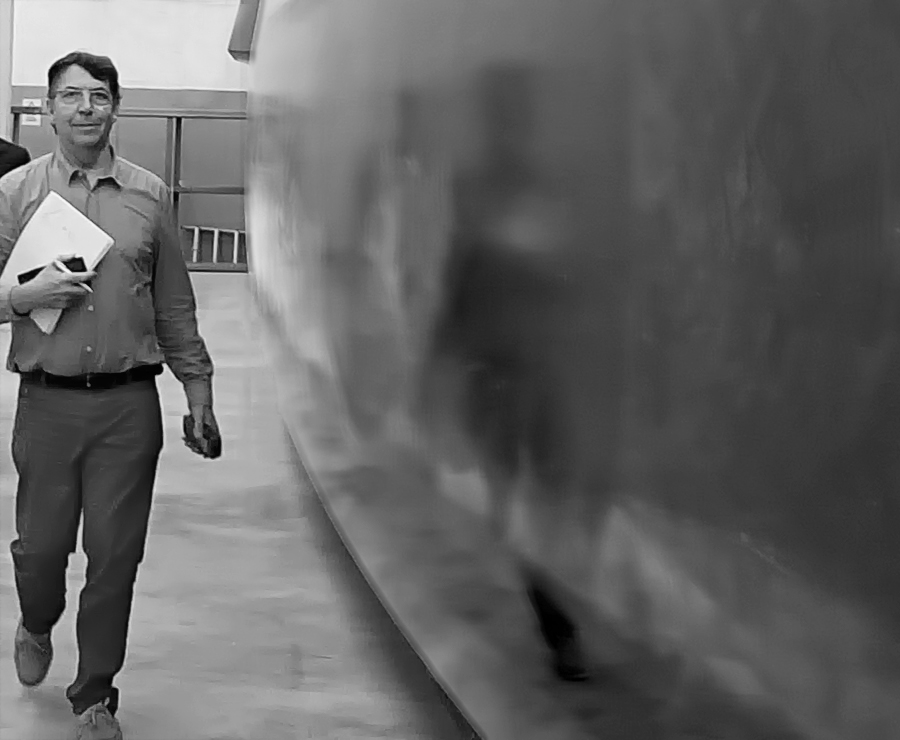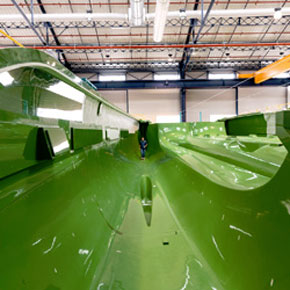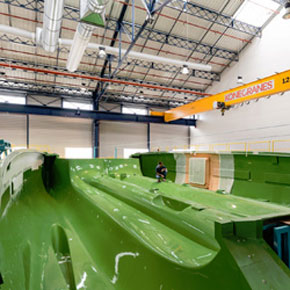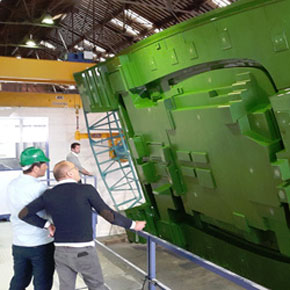 We asked Marc Essertel, responsible for supervising the design, construction and approval of composite tooling for Lagoon, to explain this major new step: the manufacture of the moulds for the SEVENTY 7.
We asked Marc Essertel, responsible for supervising the design, construction and approval of composite tooling for Lagoon, to explain this major new step: the manufacture of the moulds for the SEVENTY 7.
The completion of manufacture of the preform and its approval in terms of geometry and finish triggers the manufacture of the mould. It is a case of moulding on this preform, which is the exact shape of the future hull or deck, an impression that will become the production mould for the composite components.
Everything begins with meticulous waxing of the preform, then comes the application of an extra-hard gelcoat. This gelcoat is covered with successive layers of laminar composite, alternated with fiberglass, impregnated with resins specially formulated for mould manufacture, until a wall thickness in the order of thirty millimetres has been attained. The mould will thus be able to withstand the mechanical and thermal stresses generated by the production of large components.
Once this "skin" has been completed, a tubular steel structure is attached to stiffen the entire item and enable its use (installation of safety equipment and access for workers). So the manufacture of composite components can begin.
The role of the mould in the manufacture of composite parts
It is basically the combination of resin and fibreglass fabric: these two types of material, when processed, are liquid and adhesive in the case of the resins, flexible and drapable in the case of the fabric. At this stage of production, they have no mechanical strength such as plywood or aluminium sheet might have. They must therefore be applied and supported on a substrate that will give them their shape, until the hardness of the material enables the release of the component from the mould and ensures its dimensional stability.
There is nothing better than moulds to perform this function. The moulds will ensure that all components produced will have perfectly accurate geometries and technical and mechanical characteristics in accordance with the design office specification.
It is this reliability in terms of form and strength that ensures that each boat is assembled precisely, by means of a proven and repeatable process.
Key figures for the SEVENTY 7 hull mould
- more than 23 metres long
- 11 metres wide
- approximately 5 metres high
- surface area 600 m²
- total weight 28 tonnes!
Add to this a deck mould, a coachroof mould, a hardtop mould and some sixty moulds for the manufacture of all the composite components used in the construction of this complex and magnificent superyacht.
So these are vital tools for our production teams.
Now all we have to do is mould all the parts for this giant!
Marc Essertel
In charge of supervising the design and construction and approval of composite tooling for Lagoon.
Once our design office has approved the form of a component to be manufactured, my role, in conjunction with the methods team and the project manager, is to design the forms and determine the constructional principles of a mould enabling production of the required component, using the expected moulding technique and with the aim of optimising production.
When the moulds arrive in our workshops, I assist the project manager in performing the final acceptance of the tooling and authorising its use.
In addition to supervising the production of new moulds, my assignment is to develop, maintain and replace Lagoon’s mould inventory.




